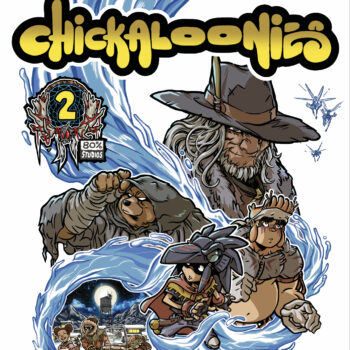
From Grandma’s Tales to Comic Success: The Inspiring Journey of 80% Studios’ Chickaloonies
In a world brimming with heroes and adventures, there are tales that spring from the deepest roots of culture, echoing the timeless wisdom of generations. The Chickaloonies comic series stands as a testament to Indigenous representation, drawing inspiration from the rich tapestry of traditional Athabascan legends. Delving into the origins of Chickaloonies, the RIVR spoke with 80% Studio Owner Dimi Macheras on his journey to weave new narratives in ancient teachings. Explore the captivating genesis of Chickaloonies and the creative vision behind its endearing characters, offering a glimpse into the vibrant landscape of Alaska’s storytelling tradition.
What inspired you to create the Chickaloonies comic series?
I grew up hearing traditional Athabascan legends from my Grandma (Patricia Wade). Some of my earliest memories are being captivated by the way she would make funny voices for the different characters and it painted pictures in my mind at an early age. Around the beginning of the pandemic, my 80% Studios co-creator, Casey Silver and I were exploring ideas for a new story. We had been self-publishing comic books for 10 years at that point. Our subject matter up until then was mostly science-fiction, action/adventure & cyberpunk. My Ahtna-Athabascan heritage has always been a source of inspiration for me so we began discussing the possibility of an Alaska Native themed story. I knew I didn’t want to retell old stories, but instead come up with new legends based in the themes and values of those old tales called “Ya Ne Dah Ah”, which means ‘ancient teachings’. That was the basis for what would become Chickaloonies.
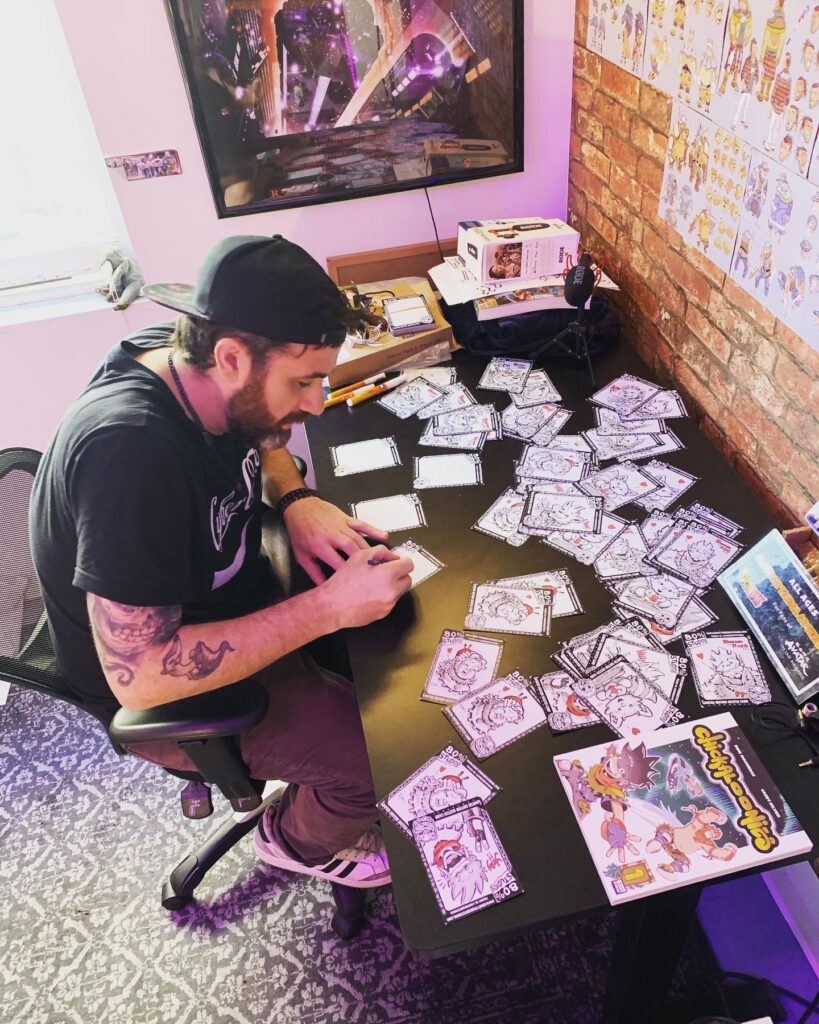
Could you tell us a bit about the origin story of the Chickaloonies and how you developed the characters?
Actually the characters came first! During a conversation between Casey and I at a coffee shop here in Seattle (where we are based), 2 funny things occurred. I made the observation as I was sending a text that “They should make a Sasquatch emoji”, and immediately recognized what a cool name for a character that would be. Mere moments later a very loud, angry man out front was causing a big ruckus, screaming and shouting. Casey said “Wow, Mister Yelly out there”, and BOOM, just like that these 2 characters basically just dropped into our world! I wrote the names down, and soon began sketching designs. It wouldn’t be another 5 years until we began creating the world of Chickaloonies which would feature these 2 best friends. Sasquatch E. Moji who only speaks in pictures and emojis, and Mister Yelly who just like his name communicates with words and speech. These are exaggerated versions of Casey and I, who use WORDS and PICTURES to tell stories. Just like us, they want to be THE GREATEST STORYTELLERS IN THE WORLD! To round out the cast, the boys’ Grandma is central to the book. She’s the Village Elder, knowledge-keeper and Storyteller, and she’s instilled a great love of stories in Moji and Yelly. I based her off my own, late Grandma, Katherine Wade as a way to keep her memory alive.
What challenges did you face when bringing the Chickaloonies to life, and how did you overcome them?
I really wanted to explore what it means to be a Native Storyteller in a fictional, fantastical world, but reflected off the Graphic Novel medium. Representation is so important, and while I’m not the first person to make an Indigenous themed ‘comic book’, we wanted Chickaloonies to be something fresh that is uniquely Ahtna/Athabascan, but can be enjoyed by people of all backgrounds and ages. We are so fortunate to have the insight and Cultural knowledge of my cousin and fellow artist, Melissa Shaginoff. She offers a different perspective to this book which elevates it beyond a fun, Alaskan manga, to a new way of conveying and exploring the richness of our Cultural Heritage. We wanted to make something for Alaskan kids, both Indigenous and non-Native, that celebrates Cultural awareness but not in a preachy or heavy-handed manner. One major evolution of the way we share our stories came when we embarked on the release tour of the first book. We created a ‘Live Storytelling Experience’ complete with music and animation. Casey dresses as one of the characters from the book and tells one of our all-new Ya Ne Dah Ah stories, while I trigger an animated, multimedia slideshow. This became central to what Chickaloonies represents: A continuation of the ancient tradition of storytelling. It really allowed us to connect with our fans in a new way that not only entertains, but enriches the experience of reading the book. Making an Indigenous graphic novel about 2 young storytellers had now come full circle, connecting with the age-old art of storytelling which inspired me as a young child, and passing that on the the next generation.
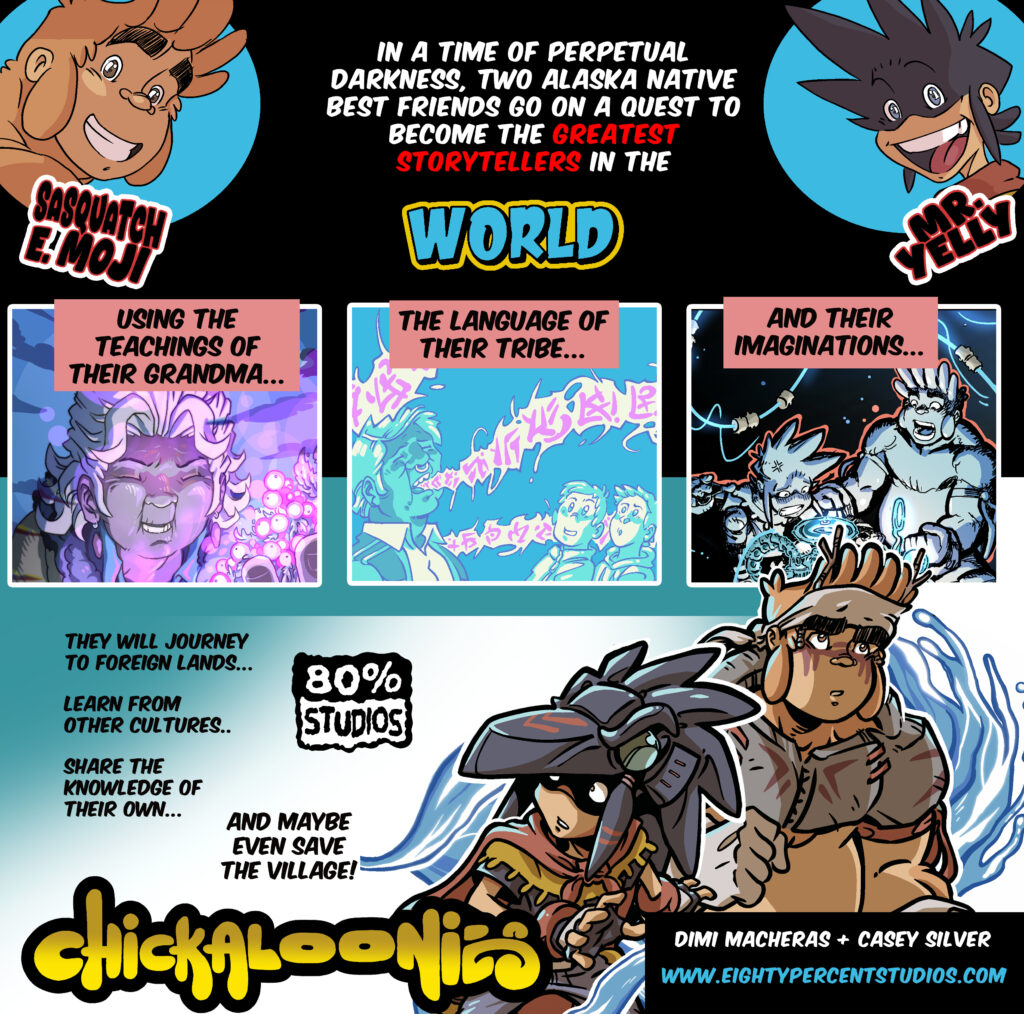
How do you see the Chickaloonies fitting into the wider comic book landscape?
Chickaloonies is the first time we’ve ever reached this level of success. We were always happy to table at comic conventions and sell a few comics. With the release of the 2nd volume ‘Watering Ways’ we have gained a wonderful fan base as well as new readers hopping on the adventure every day. The true foundation of this story is Alaska. For most of our career as 80% Studios we always strived to break into the comic book industry. We self-published everything, and never gave up on creating our own stories, which isn’t typically how you break into the industry. Usually you do work for hire, or pitch your work to an editor for a shot to work on a pre-established title. With Chickaloonies we’ve linked in with this incredible network of Alaskan-based Tribal organizations, libraries, schools and book shops. It’s allowed for us to keep our focus on continuing working on this ongoing series, all without the support of a Publisher. We really want Chickaloonies to be a uniquely ALASKAN story. Just how Japan and Europe have very richly defined comic book cultures, we envision a similar culture for Alaska. There are so many incredible artists and storytellers who hail from all the richly diverse communities there. Sasquatch E Moji and Mister Yelly are just our local avatars primed to meet up and crossover with other potential characters who call Alaska home.
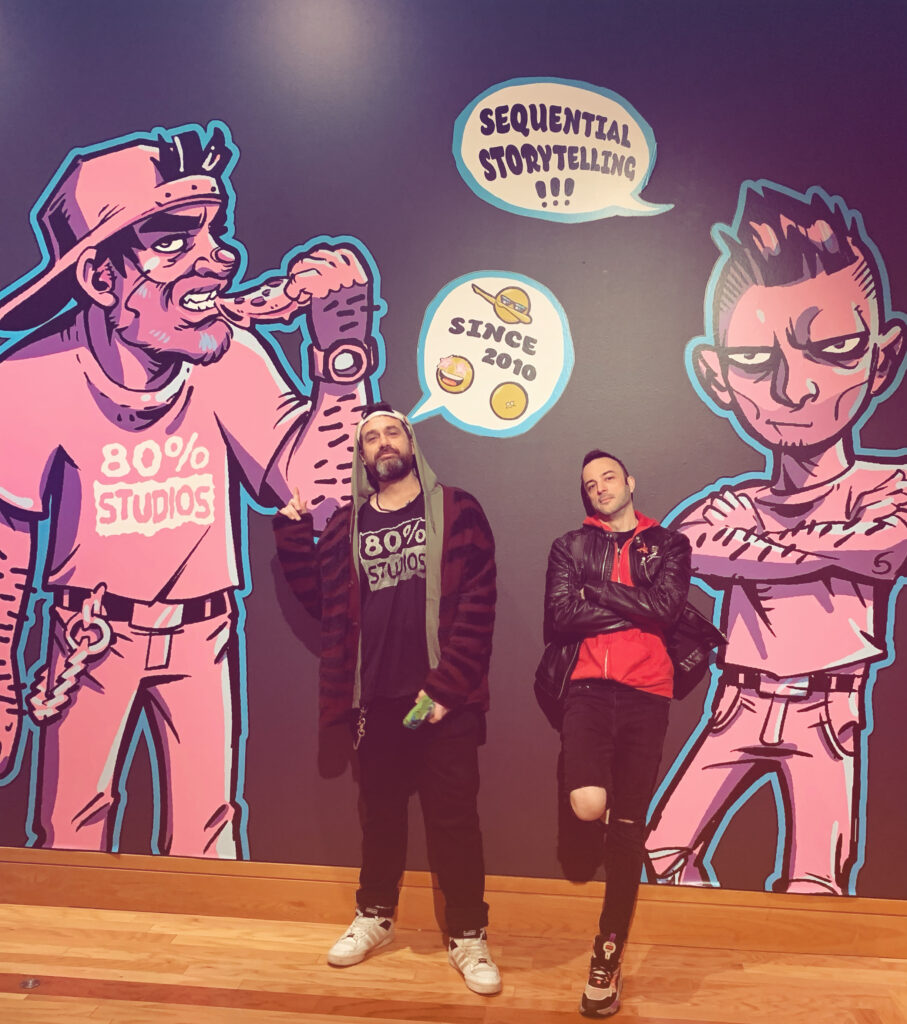
What’s the most rewarding part of creating comics for you?
Creating our own stories and having the creative freedom to expand the world these characters exist in keeps me passionate about making comics. It took me a long time to get comfortable drawing sequential art, and I owe a lot of that to my collaboration with Casey. While we have different skill sets and talents, we focus on every creative aspect of Chickaloonies as though we are one mind. It really elevates the work and makes so much possible in terms of our method of production. We level up with each book we do, and just like I tell aspiring artists who attend our ‘Words & Pictures Storytelling Workshops’, “the more you practice, the better you get, and the more fun you have doing it.” 80% Studios got its name as a bit of a joke, after a failed attempt at a job for Nickelodeon. Our peers and fellow comic artists would always say we were “80% there, but not quite”. When it came time to brand ourselves, we leaned into it and took on the name as a badge of honor. But over the years the meaning has come more into focus. It’s less about being 80% good enough, but more about our journey as storytellers. Like they say – it’s not about the destination. 80% represents this point in our story where we are confident in our work, but are always looking to refine our skills and continue learning to become better at what we do. We have a long story planned out for Chickaloonies, and every time a piece of that story becomes real in the pages of the book, THAT’s what’s most rewarding to me.
What advice would you give to aspiring Native comic book creators who are just starting?
First off, don’t let anybody tell you that you aren’t good enough, or that you can’t do it. You CAN and YOU MUST! Storytelling and living a life of art is something I will never trade for anything. No 2 people are on the same timeline so don’t compare yourself to others. There will always be some younger, more talented hotshot that will make you question your abilities, but it’s important to allow that to inspire and motivate you. Comic books are more than pictures or words…they are STORIES, and thats the most important thing to know about this amazing medium. You might not be the best artist or writer in the world, but if you can weave words and pictures together in a way that tells your story, you can truly make an impact. I’m still trying to better understand this about comics and the sooner you do, the better. Make your own stories and characters! There’s already way too many Spider-Man or Naruto comics out there. The world needs new characters, and new stories! I learned from my Grandma, and she gave me so much inspiration to draw our traditional stories when I was younger. I suggest connecting with Elders and culture-bearers to learn more about your own cultural identity.
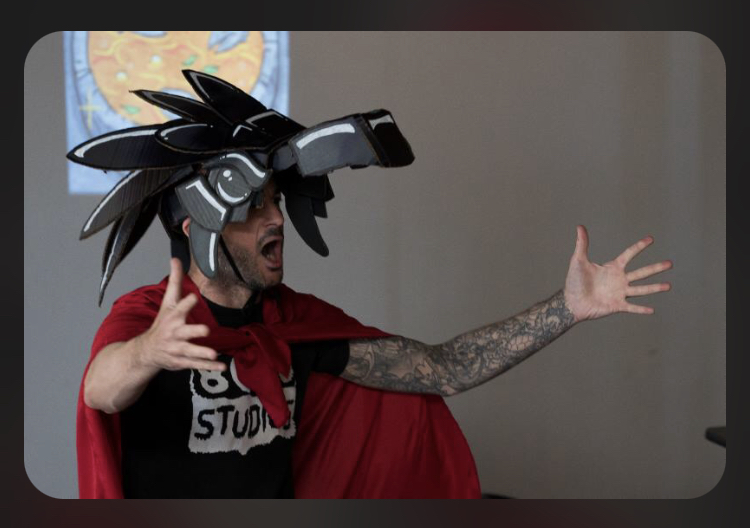
We all create ourselves in our chosen creative medium, so ask yourself “who am I and how do I see the world…how does the world see me?” Our ancestors passed down knowledge and traditions, so what better way to express them than in a comic book! Also related to that, consider collaborating with someone. I was so lucky to meet Casey, someone who’s passion for creating stories matches my own. We wouldn’t be where we are without our commitment to 80% Studios over the years. We’ve found that being able to bounce ideas off one another from every angle of our process makes the end product SO much better. Having someone to keep you on task and excited can make such a huge benefit. Finally, I’d say don’t hold out for perfection. Many of us want to render, refine, and rework our art over and over trying to get it to be perfect. The real mastery comes from creating something as best you can, and sharing it with others, even though it might be scary. Merely finishing a comic story is a huge achievement, and being able to look back on your work from different angles will really push you to want to start your next project as soon as possible. You’ll be more eager to put into practice all the new knowledge you’ve gained from seeing a project through to the finish. That’s a long answer, but such an important question!
